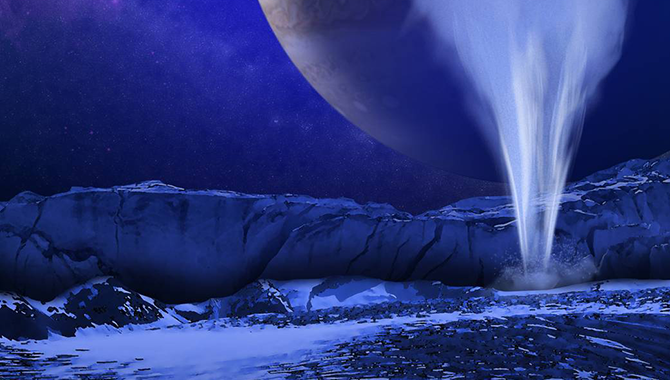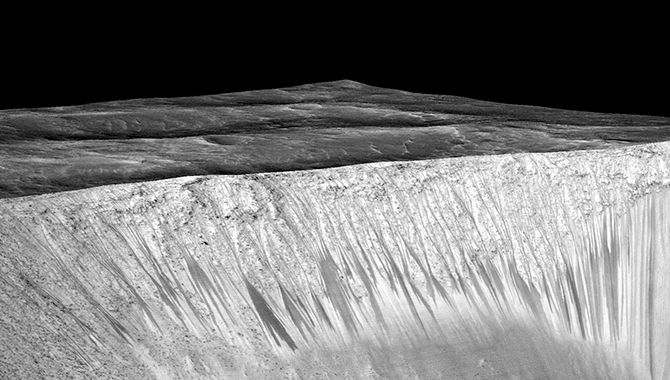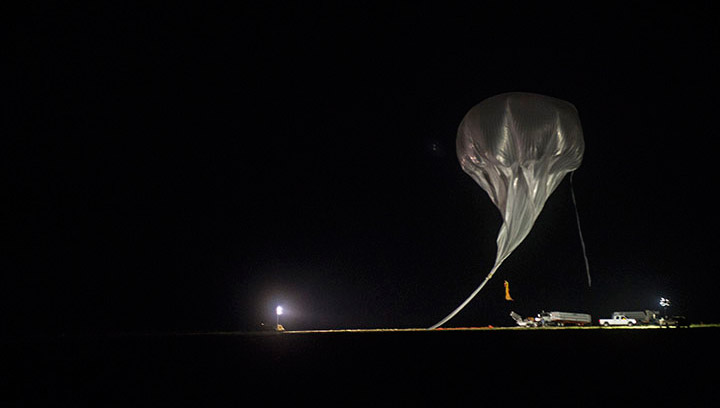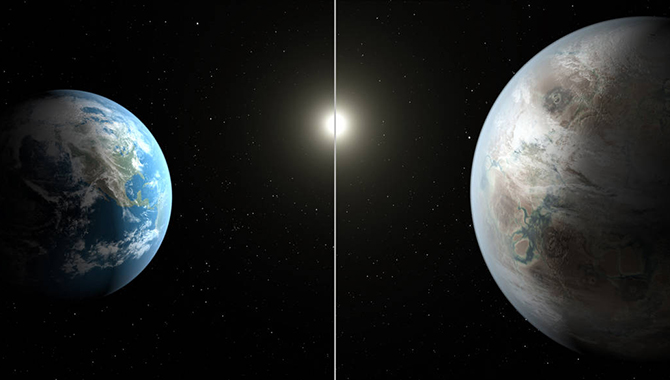
Artist’s concept of a water vapor plume shooting from Europa’s surface. Recently selected science instruments for the Europa mission include a “plume hunter” that will help determine the location, activity, and contents of Europa’s mysterious plumes.
Image Credit: NASA/ESA/K. Retherford/SWRI
State-of-the-art science instruments have been selected to help the Europa mission answer the big question: Are we alone in the universe?
“The mission design is still being studied, but we wanted to get a head start on the instruments as they’re often the long poles in the development of something as complex as the mission to Europa,” said John Grunsfeld, associate administrator for the Science Mission Directorate at NASA.
About the size of Earth’s moon, Europa has a number of intriguing features that lead scientists to believe it may be habitable. At the heart of that supposition is evidence that the moon contains a large subsurface ocean that may have existed for billions of years. The ocean, which could hold twice as much water as exists on Earth, is believed to contain salty water and sources of heat much like the hydrothermal vents seen in Earth’s ocean that bring up nutrients from the planet’s core.
“All of those components are the kinds of contributors that we believe are necessary ingredients for life to emerge,” said Grunsfeld.
Despite its potential for harboring life, little is know about Europa. In the 1990s, NASA’s Galileo mission included 11 flybys of Jupiter’s moon, yet the images only captured about 10% of Europa’s surface at resolutions of 200 meters or better. More recently, images from the Hubble Space Telescope have identified what appear to be plumes of water spouting from the moon, most likely ejected from the subsurface ocean.
Investigating the plumes will be a key focus of the Europa mission. As a result, one of its nine science instruments is an ultraviolet spectrograph—or what Curt Niebur, Europa program scientist, termed a ‘plume hunter.’
“This is the instrument that is specifically designed to hunt [plumes] down and tell us where they are,” said Niebur. The mission will attempt to determine the existence of the plumes, their location, their level of activity, and what materials they eject into space.
Eight other instruments will accompany the plume hunter. A magnetometer and three faraday cups will measure the magnetic field and plasma environment of Europa in great detail, which, said Niebur, “means that we can essentially take an MRI of the interior structure of Europa.” That will enable scientists to determine the depth and salinity of the subsurface ocean without penetrating the moon’s icy crust.
An infrared spectrometer will detail the materials present on Europa’s surface, including something currently known as brown gunk. “That is our state-of-the-art term for it: brown gunk,” joked Niebur. Despite knowing little about it now, he and others believe the gunk is a product of underwater eruptions that have penetrated Europa’s surface and so hold the secret to the content of the moon’s internal ocean or lakes. “That is an incredibly important question to answer if we’re trying to figure out if this place is habitable,” said Niebur.
Additional instruments include cameras, ice penetrating radar, a thermal imager, a mass spectrometer, and a dust analyzer. “All of these instruments are designed to increase our rather limited knowledge of Europa, and they’re doing that by helping us probe the big question, which is: ‘Is Europa habitable?’ That’s a very difficult question to answer, and these instruments all pursue a different aspect of that question,” said Niebur.
Expected to take place in the 2020s, the Europa mission will conduct 45 flybys of the moon over the course of two and a half years.
“One of the things to understand about the mission architecture is the multiple flyby concept,” said Jim Green, director of NASA’s Planetary Science Division. The spacecraft will be in orbit around Jupiter, which will allow it to fly past Europa repeatedly while minimizing time in the highly radioactive environment around the gas giant. “The architecture is set such that we maximize that time when we’re away from Europa by getting set up and aligning ourselves again for the next flyby to maximize the science that we want to do.”
Maximizing the science opportunities is critical, Green explained. “Europa is one of those critical areas where we believe the environment is perfect for potential development of life.” He added, “If we do find life, or indications of life, that will be an enormous step forward in our understanding of our place in the universe.”
Learn more about Jupiter’s moon Europa.









